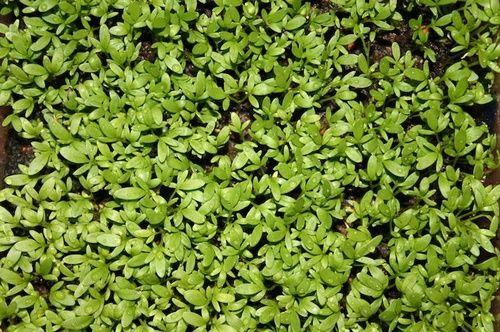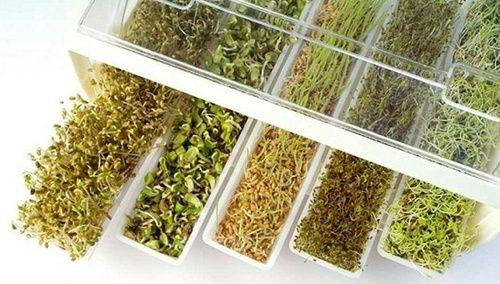I cress sprouts they are an incredibly high and efficient source of Vitamin K and have remineralizing properties, useful for the liver and the gallbladder. Let's find out better.
> Description of the watercress
> Composition of cress sprouts
> Organoleptic characteristics and use of cress sprouts
> Secrets of sprouting

Description of the cress
Watercress, scientifically called Lepidium sativum, is a brassicacea with a characteristic spicy flavor reminiscent of mustard, much appreciated both today and in ancient Roman times. In particular, it is grown and marketed in the Northern European countries such as England, Holland and Denmark and in North America, generally with hydroponic cultivation, but it is also known in the Indian peninsula, so much so that it is present in the forms of ayurveda.
The plant has a typical shape: green stems about twenty centimeters long, with small rounded leaves at the apex. In the country it is also very well in fields such as spontaneous plant.
Composition of cress sprouts
One of the main characteristics of cress sprouts is that they are an incredibly high and efficient source of vitamin K, followed by Vitamin C and from Vitamin A, even if it contains to a lesser extent the whole range of vitamin B. It is also rich in a wide range of elements, among which iron, calcium, manganese and phosphorus stand out.
Properties and benefits
Watercress sprouts are a perfect food remineralizing, given the richness of vitamins, water, trace elements and numerous enzymes. Vitamin K is important in the diet of children, in that of people with heart disease and those with liver and liver problems gallbladder.
Watercress sprouts can help regenerate the intestinal bacterial flora. Indian medicine attributes various properties to it: tonic, rubefacient, ophthalmic, diuretic, antispasmodic, antiasthmatic. It is also recognized as hypoglycemic properties.
You can also learn more about how to prepare sprouts at home

Organoleptic characteristics and uses of cress sprouts
The first characteristic that strikes those who taste the cress sprouts is theintensity of taste: pungent and a little spicy, bitter, to the point of remembering wild rocket, mustard or mustard.
Due to these characteristics it is often used as gasket for bruschetta or canapes, as well as used in mixed salads almost as a condiment. It is also consumed steamed or in soups, added a little as if it were a spice.
Sprouting secrets
Watercress's preferred sprouting method is the glass pan, in which the seeds are placed after a very rapid development: after immersion the small red seeds produce a gelatinous substance and from that moment on they need a period of about four days with frequent nebulizations to finish the growth in the sprouting plant. Following the harvest that takes place when the sprout reaches a size between two and four centimeters, the sprouts need to be kept in containers free of stagnant water.
READ MORE
The properties, benefits and recipes with watercress
| Wikipedia | Shop.hydroponicsfarming.com


























